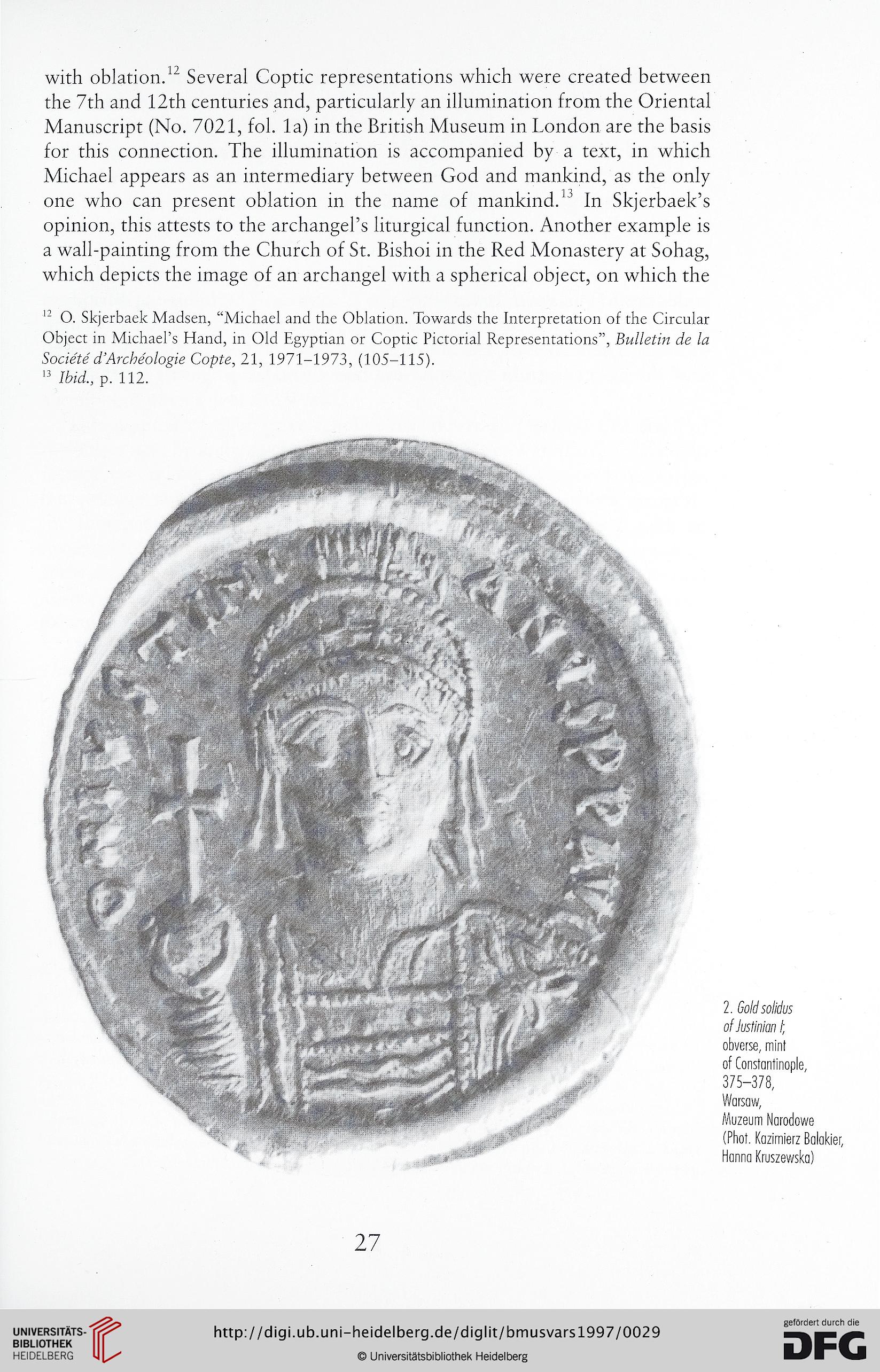with oblation.12 Several Coptic representations which were created between
the 7th and 12th centuries and, particularly an illumination from the Oriental
Manuscript (No. 7021, fob la) in the British Museum in London are the basis
for this connection. The illumination is accompanied by a text, in which
Michael appears as an intermediary between God and mankind, as the only
one who can present oblation in the name of mankind.1’1 In Skjerbaek’s
opinion, this attests to the archangel’s liturgical function. Another example is
a wall-painting from the Church of St. Bishoi in the Red Monastery at Sohag,
which depicts the image of an archangel with a spherical object, on which the
12 O. Skjerbaek Madsen, “Michael and the Oblation. Towards the Interpretation of the Circular
Object in Michael’s Hand, in Old Egyptian or Coptic Pictorial Representations”, Bulletin de la
Sociétéd’Archéologie Copte, 21, 1971-1973, (105-115).
13 Ibid., p. 112.
2. Gold solidus
of Justinian I;
obverse, mint
of Constantinople,
375-378,
Warsaw,
Muzeum Narodowe
(Phot. Kazimierz Balakier,
Hanna Kruszewska)
27
the 7th and 12th centuries and, particularly an illumination from the Oriental
Manuscript (No. 7021, fob la) in the British Museum in London are the basis
for this connection. The illumination is accompanied by a text, in which
Michael appears as an intermediary between God and mankind, as the only
one who can present oblation in the name of mankind.1’1 In Skjerbaek’s
opinion, this attests to the archangel’s liturgical function. Another example is
a wall-painting from the Church of St. Bishoi in the Red Monastery at Sohag,
which depicts the image of an archangel with a spherical object, on which the
12 O. Skjerbaek Madsen, “Michael and the Oblation. Towards the Interpretation of the Circular
Object in Michael’s Hand, in Old Egyptian or Coptic Pictorial Representations”, Bulletin de la
Sociétéd’Archéologie Copte, 21, 1971-1973, (105-115).
13 Ibid., p. 112.
2. Gold solidus
of Justinian I;
obverse, mint
of Constantinople,
375-378,
Warsaw,
Muzeum Narodowe
(Phot. Kazimierz Balakier,
Hanna Kruszewska)
27




